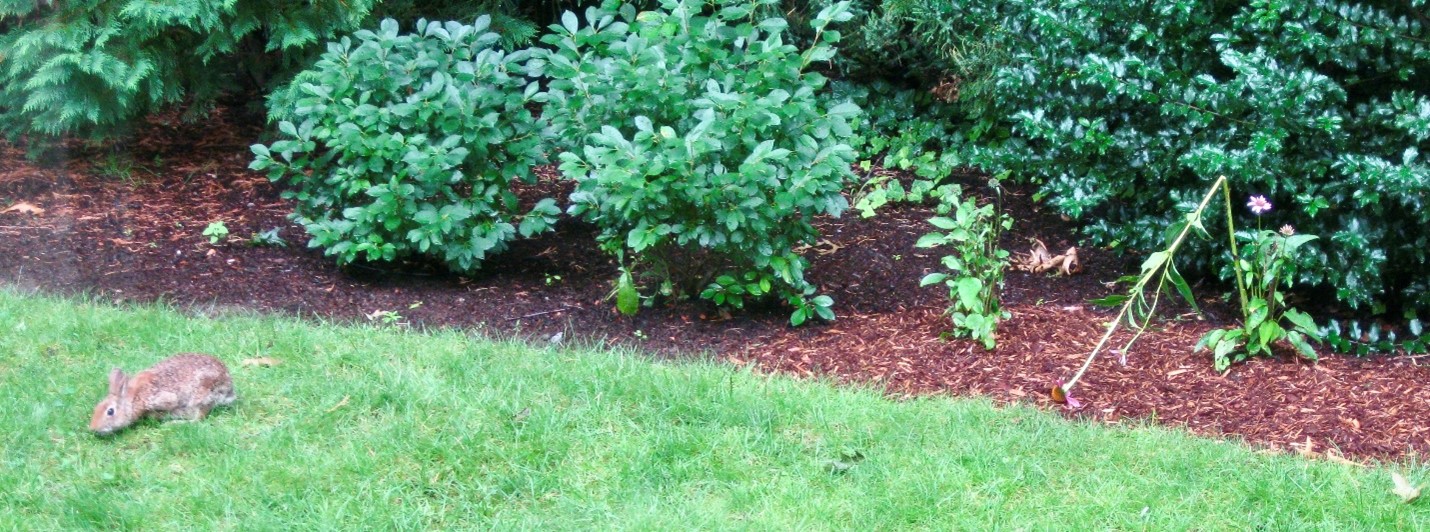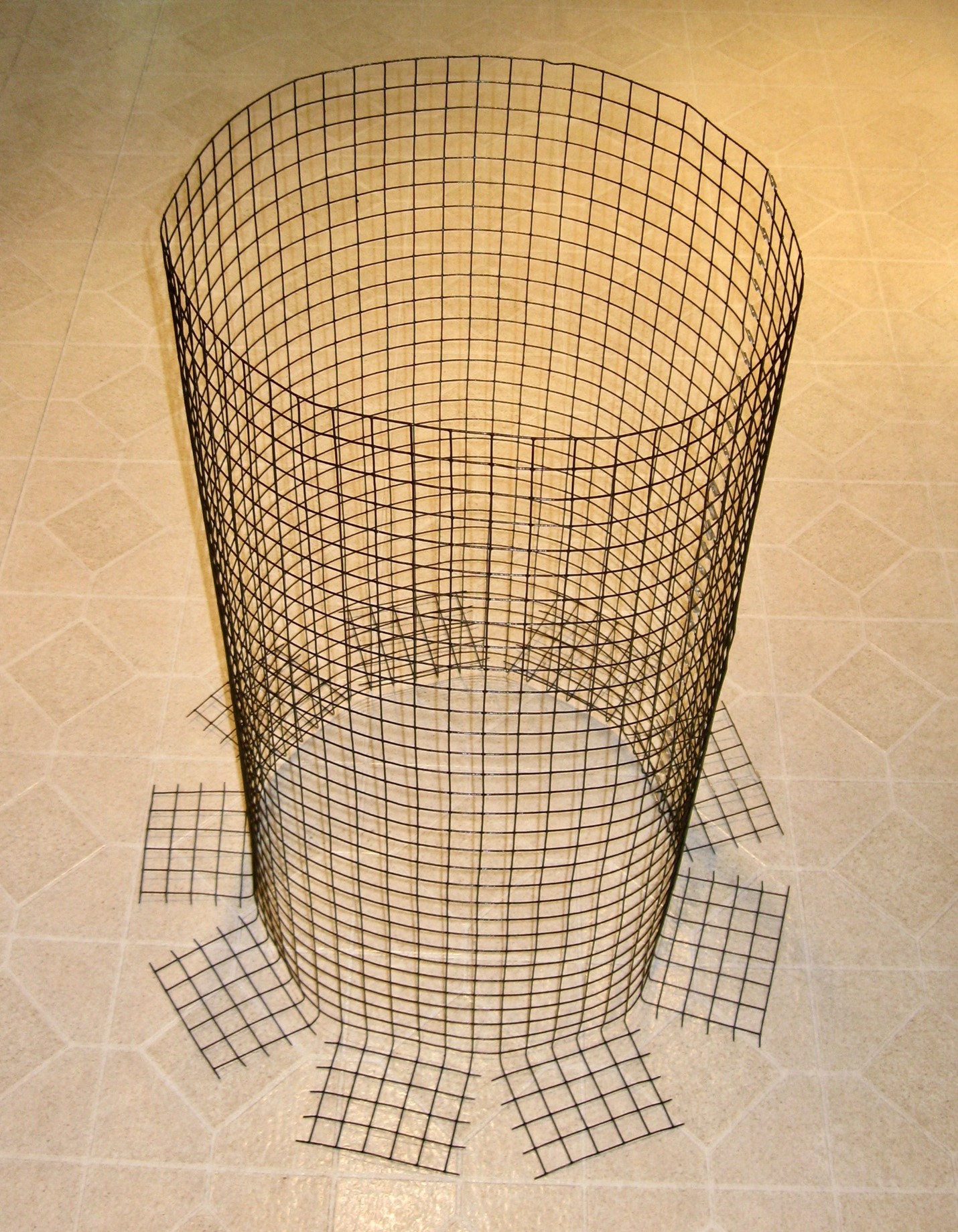Echinacea Plant Protector
Jan 26th 2021

Charles C from Belmont, MA devised a way to protect small individual plants like his Echinacea plants with our fencing by cutting it into cylinders. How he did this is below:
"Here’s a success story involving a novel use of Critterfence Black Steel 1 inch Square Grid. Winter in New England is bleak, so we’ve planted many evergreen shrubs in our garden, such as Holly, Rhododendron, and Mountain Laurel. To add color in Summer, we’ve added tall, perennial, flowering plants such as Echinacea (a.k.a. Coneflower) and Black Eyed Susan. Rabbits love these flowering plants. They eat the flowers first, and then the green leaves . The flowers grow on stalks 2 ft to 3 ft tall, which is higher than a rabbit can reach, so a rabbit bites through the stalk where he can reach; the stalk breaks at this point and the flower falls to the ground. (Smart, huh?) I photographed this rabbit (acting guilty, slinking away on the left) just a few seconds after he'd felled the Echinacea flower on the right:

In mid-July of 2018 we planted 13 Echinacea plants. By late July, more than half of their flowers had been eaten. (I took the above photo on July 25.) By mid-August, all of these plants had been eaten down to the ground.
Critterfence rescued all our Echinacea plants (and our blueberry bushes). Here’s how:
I bought a 100-ft roll of Critterfence, Black Steel, 1 inch Square Grid, 3 ft wide. I cut this roll into sections 56 inches long. From each section I formed a circular cylinder having height equal to 3 ft and diameter equal to 18 inches.
You can make a cylinder of whatever diameter you like, within reason. To make a cylinder of diameter D, cut a length of fence equal to pi times D, where pi = 3.1416.
I joined the cut ends of each wire-grid fence section by means of butt-splices and a crimping tool; but you could use nylon zip-ties. Or, you could lace the ends together with one long wire. Or, you could do without a separate fastener or fasteners, by utilizing the cut-free ends of the wire grid. If you cut each 1-inch wire section at one end, then you could form hooks with the one-inch-long stubs. If you cut each 1-inch wire section at its middle, then you could twist the half-inch stubs together.

At one end of the cylinder I’d made, I snipped five wires at intervals of 6 inches, to make 6-inch square tabs that I bent outward by 90 degrees. The following photo shows the result. On the right side of this cylinder you can see the seam where I joined the cut ends of the wire-grid together
This cylindrical fence is self-supporting. It requires no posts.
I set one of these cylindrical fences down on, i.e., around, each Echinacea plant. Then I drove a 12-inch “tent” stake into the ground through every other tab. With these stakes in place, the fence cannot be pushed aside, knocked over, or even budged, by an animal as small as a rabbit.
The tabs extending outward from the base of the cylindrical fence serve the important purpose of discouraging animals from burrowing under the fence. Our fences have been in place for nearly two years. We have unbelievable numbers of rabbits, chipmunks, groundhogs, etc.; but, in two years, no animal has gotten inside any of our cylindrical fences. I admit to being surprised that no chipmunk has climbed over a fence. If/when one does, I plan to run an electrically charged wire, supported by one-inch stand-off insulators, around the perimeter of each cylindrical fence at its top.
The beautiful thing about these cylindrical fences is that they are practically invisible, because they are black. It is difficult to photograph them against the background of foliage. I took the following photo in the best possible light — with the fences in direct sunlight and the background in shadow -- on May 31, 2020. It shows eight Echinacea plants, immature, yet to produce flowers. At maturity, each plant will have several stalks extending above the top of the fence and bearing large purple flowers. In hindsight, I should have made the diameters of these fences larger."



